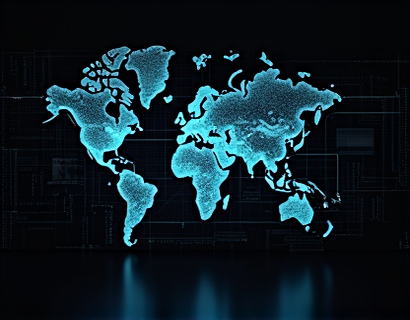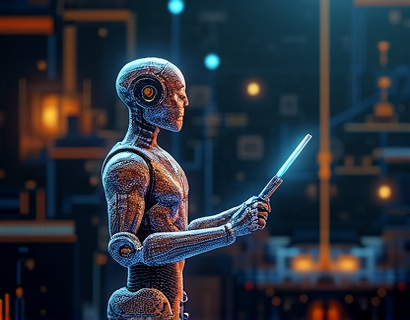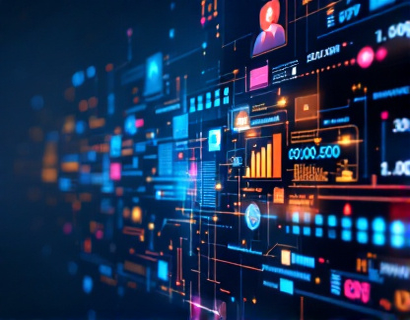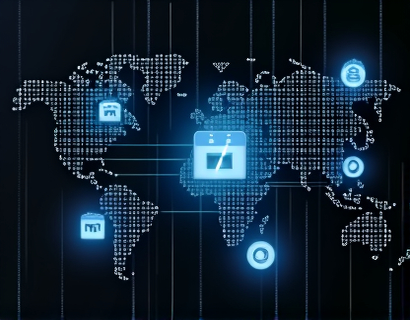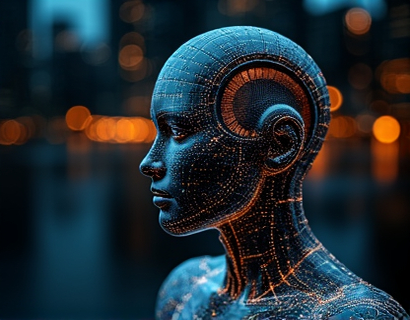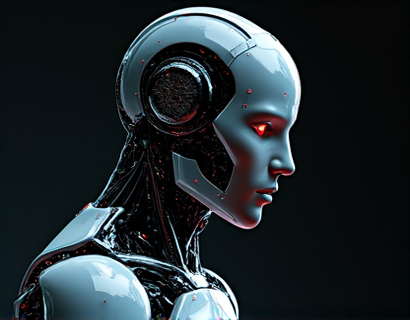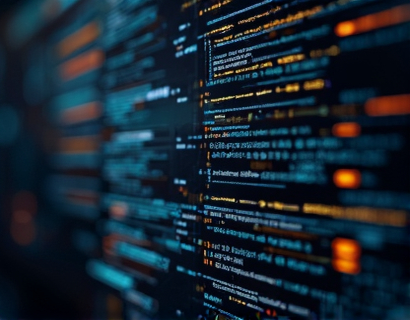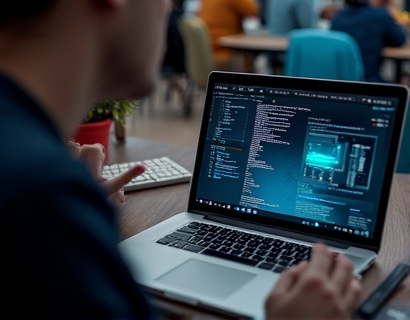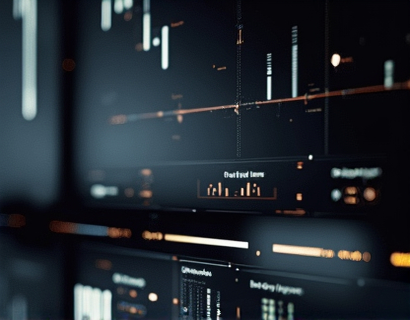Decentralized Productivity 3.0: Integrating AI and Crypto for Next-Gen Business Efficiency
The landscape of business productivity is undergoing a transformative shift with the integration of Artificial Intelligence (AI) and cryptocurrency technologies. This convergence marks the emergence of Decentralized Productivity 3.0, a paradigm that promises to revolutionize how businesses operate, connect, and innovate. By harnessing the power of decentralized networks and intelligent algorithms, organizations can achieve unprecedented levels of efficiency, security, and connectivity. This article delves into the core principles, benefits, and practical applications of this pioneering approach, aimed at tech leaders and early adopters eager to stay ahead in the digital evolution.
Understanding Decentralized Productivity 3.0
Decentralized Productivity 3.0 represents the third iteration of productivity enhancement through technological advancements. The first wave, driven by basic automation and software tools, laid the groundwork for streamlining routine tasks. The second wave introduced cloud computing and collaborative platforms, enabling real-time teamwork and data sharing. However, these advancements were centralized, relying on central servers and authorities to manage and secure data. The third wave, powered by blockchain and AI, decentralizes these processes, offering a more robust, transparent, and secure environment for business operations.
At the heart of Decentralized Productivity 3.0 is the blockchain technology, a distributed ledger that records transactions across multiple computers. This ensures that data is immutable, transparent, and resistant to tampering. When combined with AI, which provides the intelligence to analyze, predict, and automate complex tasks, the potential for business innovation and efficiency becomes immense. This synergy creates a ecosystem where data is securely shared, processed, and utilized to drive decision-making and operational excellence.
Key Components of Decentralized Productivity 3.0
The integration of AI and cryptocurrency in Decentralized Productivity 3.0 involves several key components that work together to enhance business processes. These include decentralized applications (dApps), smart contracts, and tokenized incentives.
Decentralized Applications (dApps) are software applications that run on a blockchain network rather than on a central server. These applications are transparent, secure, and resistant to censorship, making them ideal for collaborative work environments. dApps can automate workflows, manage projects, and facilitate communication among team members without the need for intermediaries.
Smart contracts are self-executing contracts with the terms of the agreement directly written into code. They automatically enforce and execute contractual obligations when predefined conditions are met. In a decentralized productivity context, smart contracts can streamline processes such as payment settlements, access control, and task assignments, reducing the need for manual intervention and minimizing the risk of errors or fraud.
Tokenized incentives are another crucial element, leveraging cryptocurrency to motivate and reward participants in a decentralized network. By issuing tokens that represent value or privileges within the ecosystem, organizations can create a gamified environment that encourages productivity, innovation, and collaboration. These tokens can be used to reward high-performance contributors, fund community projects, or purchase services within the platform.
Benefits of Decentralized Productivity 3.0
The adoption of Decentralized Productivity 3.0 brings a multitude of benefits that can significantly enhance business operations and competitiveness.
Firstly, security is a paramount advantage. Blockchain's inherent properties ensure that data is encrypted and distributed across a network of nodes, making it extremely difficult for malicious actors to alter or steal information. This level of security is crucial for protecting sensitive business data and maintaining trust among stakeholders.
Secondly, transparency is greatly improved in a decentralized environment. All transactions and interactions are recorded on the blockchain, providing a clear and auditable trail. This transparency fosters accountability and reduces the potential for disputes or misunderstandings.
Thirdly, Decentralized Productivity 3.0 promotes greater autonomy and flexibility. Without central authorities dictating processes, teams can operate more independently, making decisions and executing tasks with greater agility. This empowerment can lead to increased job satisfaction and productivity.
Additionally, the use of AI in a decentralized framework enhances decision-making capabilities. AI algorithms can analyze vast amounts of data from various sources, providing insights and recommendations that human analysts might overlook. This data-driven approach can optimize operations, predict market trends, and identify new opportunities for growth.
Practical Applications in Business
The practical applications of Decentralized Productivity 3.0 are diverse and far-reaching, impacting various aspects of business operations.
In project management, decentralized tools can streamline workflows by automating task assignments, tracking progress, and ensuring compliance with smart contract conditions. Team members can collaborate in real-time, with all actions and decisions recorded on the blockchain for transparency and accountability.
For supply chain management, blockchain provides an immutable record of every transaction and movement of goods. Combined with AI, this system can predict demand, optimize inventory levels, and detect potential bottlenecks or fraudulent activities. This level of visibility and control can significantly reduce costs and improve efficiency.
In finance and payments, tokenized incentives can revolutionize how businesses reward employees and partners. Cryptocurrency-based tokens can be used for salary payments, bonuses, or as a medium of exchange within the organization. This not only reduces transaction costs but also provides a flexible and global payment system.
Moreover, decentralized identity management systems can enhance user security and privacy. By controlling their digital identities through blockchain, individuals and businesses can securely authenticate and authorize access to various services and applications, reducing the risk of identity theft and data breaches.
Challenges and Considerations
While the potential of Decentralized Productivity 3.0 is vast, there are several challenges and considerations that organizations must address to successfully implement these technologies.
Firstly, the technical complexity of blockchain and AI requires a skilled workforce capable of developing, maintaining, and integrating these systems. Organizations may need to invest in training or hire experts to bridge the knowledge gap.
Secondly, regulatory uncertainty remains a significant hurdle. As decentralized technologies are still evolving, legal frameworks and compliance requirements are not yet fully established in many jurisdictions. Businesses must stay informed about regulatory developments and ensure their practices align with local and international laws.
Thirdly, scalability is a critical factor. While blockchain technology has made significant advancements, it still faces challenges in processing high volumes of transactions quickly and cost-effectively. Organizations must evaluate the scalability of the solutions they adopt to ensure they meet their operational needs.
Lastly, the adoption of decentralized systems requires a cultural shift within organizations. Embracing transparency, collaboration, and autonomy may challenge traditional hierarchical structures and require a reevaluation of roles and responsibilities.
Case Studies and Real-World Examples
Several organizations have already begun to explore and implement Decentralized Productivity 3.0, demonstrating its practical applications and benefits.
One notable example is a global logistics company that has integrated blockchain and AI to optimize its supply chain. By using smart contracts to track shipments and AI to predict delays, the company has reduced operational costs and improved delivery times. The immutable records on the blockchain provide transparency and trust among all stakeholders, from suppliers to customers.
Another case involves a tech startup that has developed a decentralized platform for freelance collaboration. Using blockchain for secure identity verification and AI for matching skills and projects, the platform has fostered a community of trusted professionals who can work together seamlessly. Tokenized incentives motivate high-quality work and active participation, creating a vibrant and productive ecosystem.
These examples illustrate the transformative potential of Decentralized Productivity 3.0, showcasing how it can enhance efficiency, security, and collaboration in various industries.
Future Outlook
As blockchain and AI technologies continue to mature, the future of Decentralized Productivity 3.0 looks promising. We can expect further advancements in scalability, interoperability, and user-friendliness, making these solutions more accessible and practical for a wider range of businesses.
The integration of additional technologies, such as the Internet of Things (IoT) and quantum computing, could further expand the capabilities of decentralized systems. IoT devices can provide real-time data inputs, while quantum computing can solve complex problems that are currently infeasible for classical computers, enhancing the intelligence and efficiency of AI algorithms.
Moreover, the growing awareness and acceptance of decentralized technologies among businesses and consumers will drive adoption and innovation. As more organizations recognize the benefits of Decentralized Productivity 3.0, we can anticipate a surge in the development of new applications and services that leverage the power of blockchain and AI.
In conclusion, Decentralized Productivity 3.0 represents a significant leap forward in business efficiency and innovation. By combining the strengths of blockchain and AI, organizations can create a more secure, transparent, and collaborative environment that drives growth and success in the digital age.



